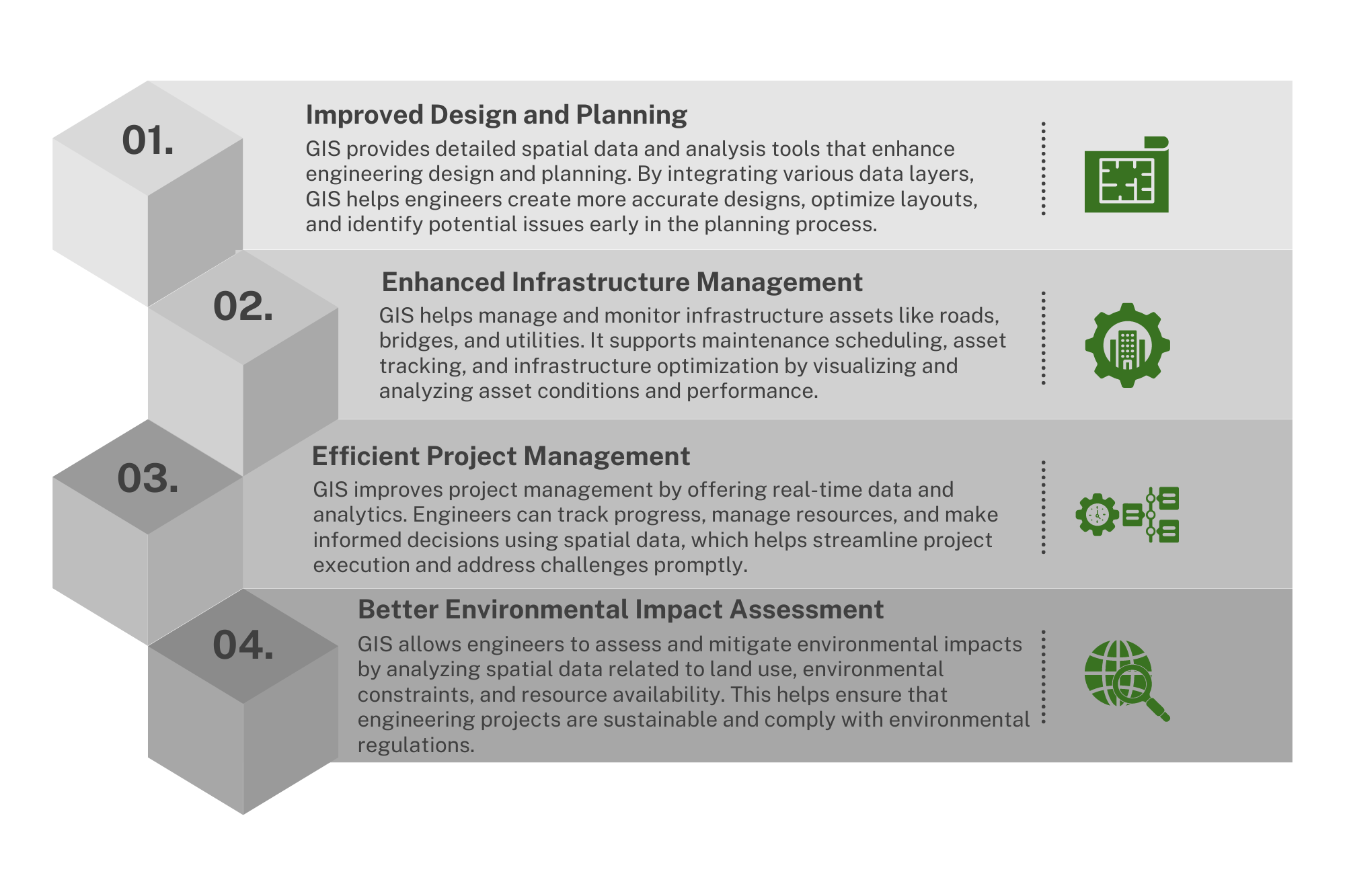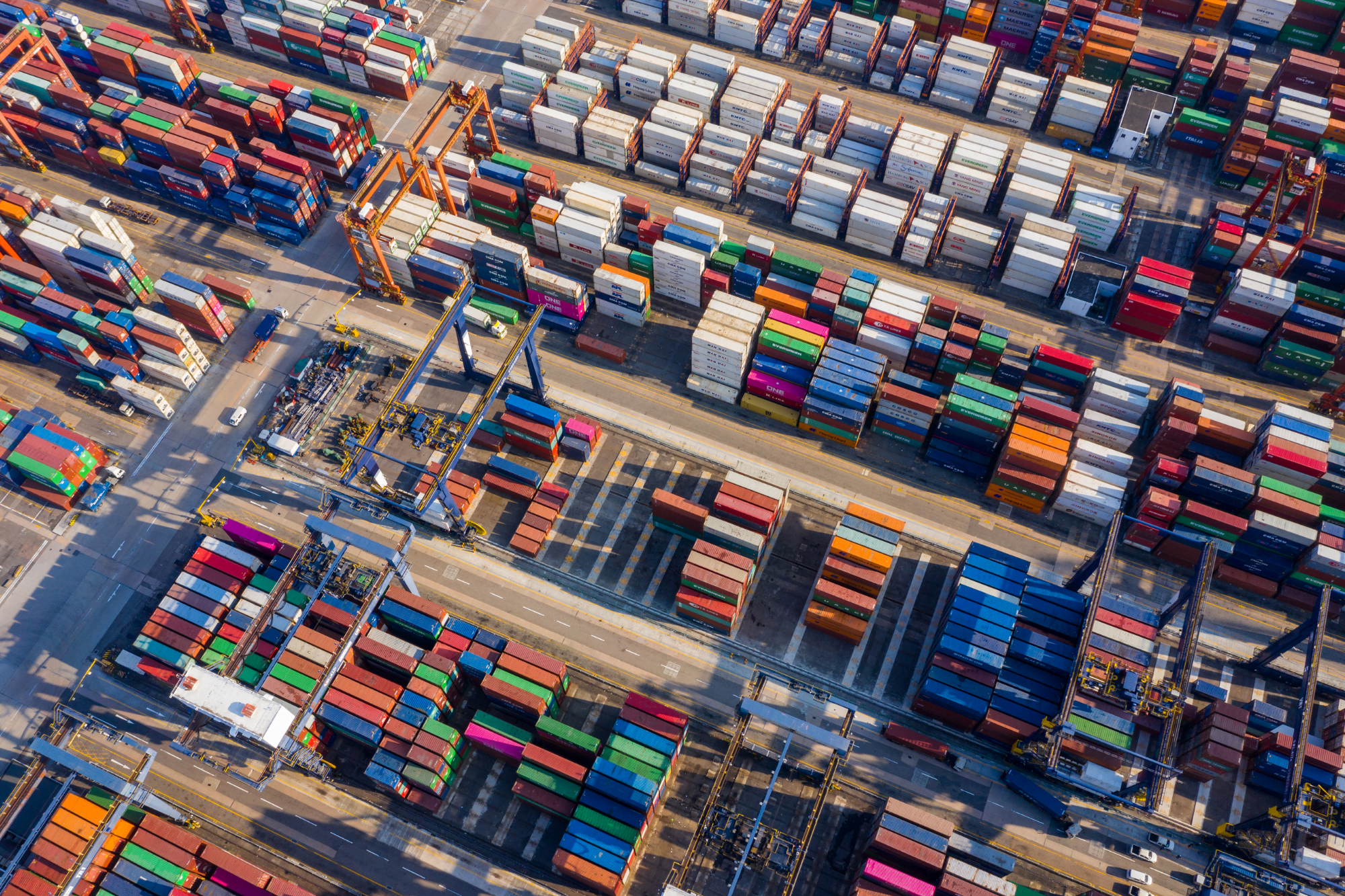Advantages of Using GIS in
Engineering, Procurement & Construction

Key Features of GIS in Engineering, Procurement & Construction
Optimized Project Planning
Improve project planning with detailed spatial analysis, ensuring accurate site selection, resource allocation, and timeline management.
Project Management
Monitor project progress in real-time, track resources, and ensure compliance with regulatory requirements.
Supply Chain Visibility
Gain comprehensive visibility across your supply chain to improve inventory management, reduce delays, and enhance coordination.
Safety Enhancements
Identify hazard-prone areas, implement targeted safety measures, and support emergency response efforts.
Sustainable Practices
Minimize environmental impact by optimizing site selection, resource usage, and adopting sustainable, eco-friendly practices.
Case Studies
Improving Project Management with GIS


Enhancing Supply Chain Visibility with GIS
Benefits of Implementing GIS in
Engineering, Procurement & Construction
Cost Savings
Reduce operational costs through efficient planning and resource allocation. GIS helps minimize waste, optimize resource usage, and ensure timely project completion.
Increased Efficiency
Enhance overall operational efficiency with real-time tracking and optimized project management. GIS streamlines processes, reduces delays, and ensures timely project delivery, boosting productivity.
Improved Coordination
Facilitate better coordination among project stakeholders with accurate spatial data and real-time updates. GIS enables seamless communication and collaboration across teams.
Safety and Reliability
Enhance safety with targeted measures and reliable emergency response. GIS identifies hazard-prone areas, supports emergency coordination, and ensures the safety of your operations.
Sustainability
Promote sustainable practices and reduce your environmental footprint. GIS helps optimize site selection, adopt eco-friendly practices, and support green construction, contributing to a healthier planet.
What Our Clients Say





Ready to Transform Your Operations?
Contact us today to learn more about how GIS can revolutionize your transportation and logistics operations.
Frequently Asked Questions
GIS enhances project planning by providing detailed spatial analysis and accurate site selection. It integrates real-time data, enabling informed decision-making and efficient resource allocation. By visualizing geographical data, GIS identifies potential risks and optimizes timeline management, ensuring plans are based on the most current information. This leads to more effective and streamlined project planning, reducing delays and costs.
GIS offers real-time project monitoring, efficient resource management, and regulatory compliance. It enhances communication among stakeholders by providing shared spatial data. GIS allows for timely adjustments and interventions, optimizing resource allocation and ensuring compliance with environmental and zoning regulations. This improves overall project efficiency, reduces delays, and enhances coordination and collaboration.
